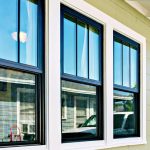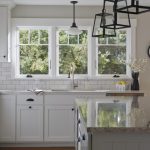
Remodelers in the Northeast and Midwest will have the nation’s best opportunities through 2025 to retrofit homes with the types of accessibility features that America’s aging population increasingly will require, a new white paper from the Joint Center for Housing Studies (JCHS) of Harvard University predicts.
If current construction patterns and forecasts continue, JCHS estimates that construction of new homes in the Northeast with basic accessibility features will fall 500,000 units short of the region’s needs, while the Midwest will be 300,000 units below required levels. For this study, JCHS defines basic accessibility features as a home in which there’s no step required to enter the house and there’s a bedroom and full bath on the home’s entry level.
Because construction elsewhere is more robust and the likelihood of building a home with basic accessibility is greater, JCHS predicts there will be a surplus of 2.1 million such homes in the South and 900,000 more homes in the West than population trends indicate.
“Fully 40% of the net gain in households age 65 and older with accessibility needs in [the Northeast and Midwest] regions is projected to have unmet demand, suggesting the need for significant retrofit spending on exiting homes to narrow this supply-demand gap,” JCHS research analyst Abbe Will wrote in the white paper, which was dated for June but not released to the public until July 13.

The white paper updates a subject JCHS has long studied: Baby boomers’ role in American housing. Among its latest findings:
- Of the more than 25 million households age 65 and over today, 44% have some need for home accessbility features.
- Less than one-third of the homes in the U.S. have even the basic accessibility features of a no-step entry and an entry-level bedroom and bath.
- Historically, older homeowners account for about 30% of all home improvement spending. Now, homeowners age 55 and over figure in 47% of the spending–nearly $90 billion in 2013.
- Roughly 45% of older homeowners plan to remodel their homes so they are easier to live in as they age, but relatively few think about those changes in terms of accessibility. Instead, they tend to focus on projects meant to increase the home’s value or repair broken or worn parts.
- Among those 45% who said they did want to remodel their home to make it easier to live in, remodeling the bathroom was the biggest major project mentioned.
JCHS continued to find a disconnect between consumers’ views of what they had and what they needed. In one survey, the center noted, “an almost equal share of owners reported that their current homes are appropriate for aging in place but arenot currently accessible.”
Universal design–a descriptor that includes the needs of an aging population–was the subject of June’s issue of Remodeling. View the issue’s stories here.
This article was written By Craig Webb and originally appeared on www.remodeling.hw.net. View the original article here.








